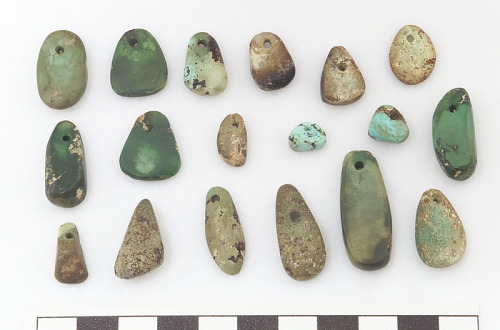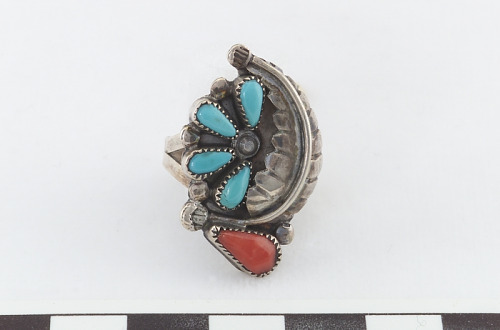Pueblo Jewelry
Turquoise has played in integral role in the Puebloan life since prehistoric times. The Zuñi Pueblo are a descendant group of the Ancestral Pueblo people and have continued the traditions of using turquoise in every day and ritual use. The multitude of Zuñi deities are all represented as wearing turquoise in the fashion of earrings that “reach the shoulders” or bracelets or “heaps” of necklaces. Turquoise is put into the masonry used to build houses and can be an offering to animal spirits that were slain for food. Men and women have separate regalia for ceremonies, and women only wear turquoise during these ceremonies that belong to male relatives, while men wear turquoise earrings daily. Sentimental strands of turquoise beads are passed down mother to daughter or father to eldest son and jewelry is sometimes buried with the owner (Hill, 1947).
Silver was introduced to the Zuñi by the Navajo with Spanish and Mexican influences and around 1890, turquoise had begun to be embedded into silver jewelry. Pieces of turquoise and other stones are shaped and inlaid in a work of jewelry to create a shape or to show off the stone. Other stones include “white and red shell (Abalone and spiny oyster), black petrified wood, or lignite,” which is a sedimentary rock created by pressed peat. The creators often portray themes of plants and animals or geometric patterns. The Zuñi create jewelry to sell to consumers, but the pieces they make for themselves are often large and extravagant (Hill, 1947).


